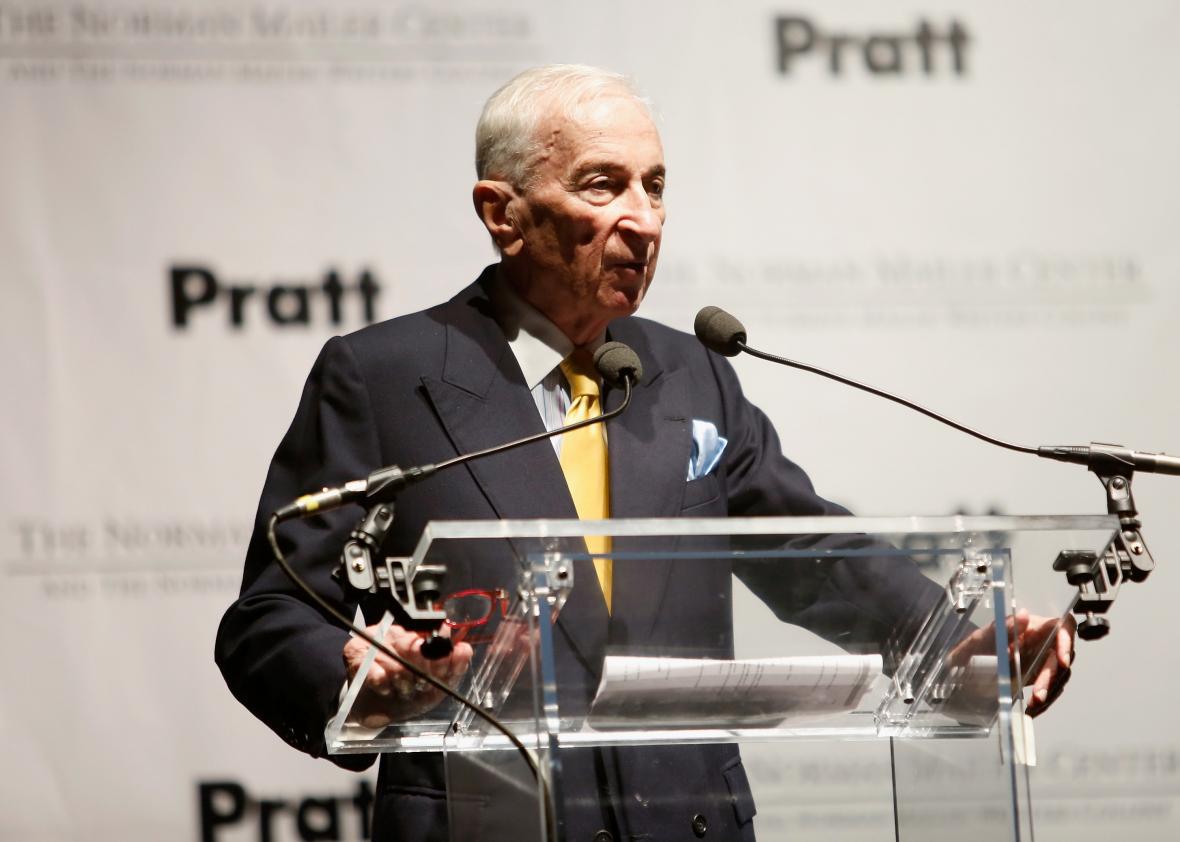Gay Talese, icon of New Journalism and nervy chronicler of celebrity sinuses, is the latest silver-maned literary lion to wander into Twitter’s crosshairs. He sparked a controversy last Friday when it was widely reported that he had told a crowd at Boston University’s Power of Narrative conference that no female journalists had inspired him as a young writer. Debate, if you wish, the merits of his subsequent defense: that there were few women doing longform exploratory reporting when Talese came of age in the ’50s; that he thrilled to the work of female novelists like Carson McCullers; that his remarks were lifted out of context. (New York Times reporter Nikole Hannah-Jones claimed that Talese also inquired during the event whether she planned to get her nails done, which doesn’t speak well of his gender enlightenment, though that story may be more complicated than it appears.) On Wednesday, the New York Times featured quotes and reactions from Talese in its layperson’s guide to the furor. Here is the piece’s lede:
On Friday, April 1, the 84-year-old writer Gay Talese made his way from New York to Boston, where he was scheduled to speak at Boston University’s “Power of Narrative” conference.
Before boarding the Amtrak train at Penn Station, he made the acquaintance of a Red Cap agent, who recognized the author and told him how much he admired his famous 1966 Esquire profile, “Frank Sinatra Has a Cold.”
On Sunday, April 3, the same Red Cap agent greeted Mr. Talese as he got off the return train. He told the author he heard he had gotten himself in trouble in Boston. Mr. Talese, who does not have a cellphone, much less a smartphone, and has remained aloof from social media, had no idea what the man was talking about.
What a tantalizing opening! So shapely, so charming. It almost seems too good to be true—exactly the kind of colorful little anecdote a mischievous New Journalist might spin for a younger reporter. Consider: On Friday, amid the devilish moil of Penn Station, an Amtrak Red Cap agent recognizes Talese and praises his most famous essay. Then, he reads literary Twitter for 72 hours. Then, that same Red Cap agent happens to see Talese again on his return trip, and teases him about the social media mess he’s in. Talese may be the most well-known American journalist of his era—along with Tom Wolfe—but really? The story seems to have burbled up from the same nostalgic pasture that first got Talese in trouble. It speaks to a quaint New York dream of masculine fellowship and good-humored servicepeople and white maleness, everywhere white maleness. A place where all share in the monoculture, which consists of Esquire articles printed 40 years ago on dead trees. A place where journalistic royalty shines forth in a crowd and celebrity cancels out trespass, at least where it matters, which is to say, not on the internet.
As of Thursday afternoon, an email to the New York Times writer to inquire whether he was able to indepedently verify this story went unanswered. (On Thursday, NYT executive editor Dean Baquet also issued a public statement criticizing the piece.) Craig Schulz of Amtrak’s Public Relations office said that he is not sure whether anyone from the paper reached out to his team for corroboration, and he doesn’t know the identity of Talese’s friendly Red Cap agent. “I haven’t had any luck yet tracking down the individual in question so I cannot confirm any of the information,” he wrote. Needless to say, it’s quite possible that this perfectly symmetrical anecdote is true! We’ll update this post as more information comes in. Regardless: It’s about as Talese-ian a lede as one could imagine.
